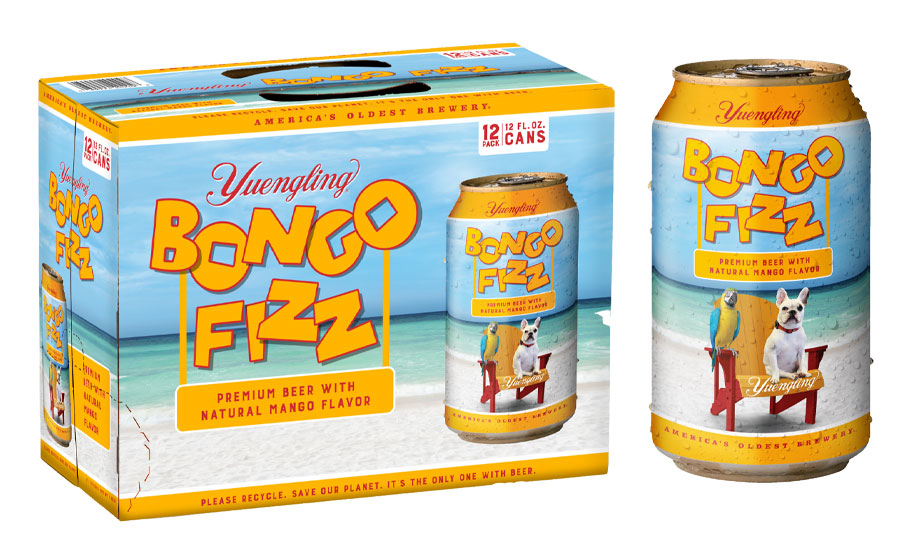2023 Beer Report | Super-premium domestics bright spot among domestic beers
Beer markets see diverging performances

Image courtesy of Anheuser-Busch
In Charles Dickens classic novel “A Tale of Two Cities,” readers are taken through fictional accounts of the issues that lead up to the French Revolution. Among its many themes, the novel spotlights the disparities between the French people and the aristocracy. Although less dramatic than a fictional tale of a historic revolution, the U.S. beer market is experiencing dissecting storylines as portions of the category thrive while others are adapting to changing consumer tastes.
“The U.S. beer market continues to be a tale of two halves,” says Brian Sudano, managing partner at New York-based Beverage Marketing Corporation (BMC). “The traditional beer market continues to decline. With the significant slowdown in the growth of beer alternatives: [flavored malt beverages] (FMBs) and hard seltzers, beer declines are at 2.5%. The weakest year in memory. Looking at traditional beer excluding FMBs and hard seltzers, traditional beer declined 3% while alternatives grew modestly.”
Sudano adds that traditional beer can be described as being in a long-term decline as growth has come from alternatives like FMBs and hard seltzer, which he notes “compete more effectively with spirits and craft beer, which is more local.”
Jon Berg, vice president of Beverage Alcohol Thought Leadership at Chicago-based NielsenIQ, also describes the U.S. beer market as fragmented, noting the disparities among its segments.
“Some segments are growing, such as imports, while others like craft and seltzers are in decline,” he says.
Noting the challenges the beer category is facing, Scott Scanlon, executive vice president of BevAl Vertical at Information Resources Inc. (IRI), Chicago, notes that players will look to spotlight the segments that performed well in 2022 in the year ahead.
“This remains a challenging time for the beer category, but it will likely get behind imports, FMB and domestic super-premium as they are showing strong momentum in 2022 and look to continue it in 2023,” he says.
For the 52 weeks ending Jan. 1 in total U.S. multi-outlets, beer sales totaled $44.6 billion, a slight increase of 0.8%, based on data from IRI. However, case sales illustrated a decline of 4.8%.
This comes as beer is looking to regain share in the total beverage alcohol (TBA) market.
“The import, FMB and domestic super-premium (Michelob Ultra) segments drove growth for the beer category of TBA [dollar sales] in 2022,” Scanlon says. “Beer is outpacing wine dollar growth and gain back some share of TBA from wine. If beer seltzer can stabilize in 2023 this should help beer gain share of TBA.”
Nathan Greene, a consultant with BMC, also points to the competition that beer has seen from ready-to-drink (RTD) cocktails or just the spirits market in general.
“Beer’s historical advantage regarding economics and market access is being challenged as the RTD spirits market gains momentum and the broader spirits market comes closer to serving share parity to beer, while providing the overall U.S. beverage alcohol market with the its greatest growth engine,” he says.
Sudano adds that beer alternatives could help the beer market make inroads against the spirits category.
“If you look at the beer alternatives, they compete more directly with spirits than traditional beer,” he says. “Brewers are leaning into these products to offset declines of traditional beer brands.”

Image courtesy of D.G. Yuengling & Son Inc.
Eyes on the home front
Although beyond beer might help the category compete against spirits, domestic beer sales ― as the largest beer segment ― also will be key in beer’s efforts to gain share in TBA.
Total domestic beer sales were nearly $26.2 billion (down 1.2%) with case sales down 6.2%. The largest of the domestic beer sub-segments ― premium ― posted sales of $11.9 billion, which was a decline of 2.3%, with case sales down 7.5%. Craft beer sales, which IRI includes in total domestic beer, were down 4.7%, totaling $4.7 billion, while its case sales declined 8.6%. The sub-premium sub-segment saw sales essentially flat totaling just under $5.2 billion, but case sales declined 6.6%.
The one outlier for the domestic beer category was super-premium, which posted a 5% increase in sales, totaling $4.3 billion, with case sales up 1.1%.
“Despite inflationary pressure and declining disposable income levels, super-premium beers like Michelob Ultra grew substantially over the last year,” says Grace Wood, senior analyst at New York-based IBISWorld. “The trend toward premiumization pressed on in 2022.”
BMC’s Sudano echoes similar sentiments: “All the domestic segments with the exception of super-premium have declined in the mid to high single digits for the past several years putting pressure on the entire market. While Michelob Ultra has driven growth in the super-premium segment.”
Despite this boost from super-premium domestic beers, analysts caution that inflation and potential recession concerns could see consumers opt to trade down; however, this is more likely to affect premium domestics.
“Domestics are starting to see trade down from premium as consumers are being squeezed with new pricing, this could lead to weak performance for premium in 2023,” IRI’s Scanlon says.
Despite this potential trade in, analysts note that domestic beer manufacturers will turn to innovation to help drive the segment.
“Consumer preferences for fruitier and more flavorful beverages are driving brewers to produce beers with new hop varieties,” IBISWorld’s Wood says.
D.G. Yuengling & Son, Inc., Pottsville, Pa., is embracing this fruitier, more flavorful side with the newest addition of Bongo Fizz, a premium beer made with a hint of natural mango flavor.
“Keeping with our tradition of brewing a beer for everyone’s taste, we are always looking for ways to provide our customers with premium, great-tasting drinking experiences for social occasions,” said Dick Yuengling, D.G. Yuengling & Son Inc.’s fifth generation brewer owner and president, in a statement. “We see a growing desire amongst consumers for fruit flavor beers.”
Meanwhile, IRI’s Scanlon anticipates the domestic beer market will look to address healthier beer need states.
“Betterment remains a strong theme in the category, lower calorie and lower carbs are becoming important as consumers shift back from beer seltzers to traditional beer,” he says.
Looking for a reprint of this article?
From high-res PDFs to custom plaques, order your copy today!






